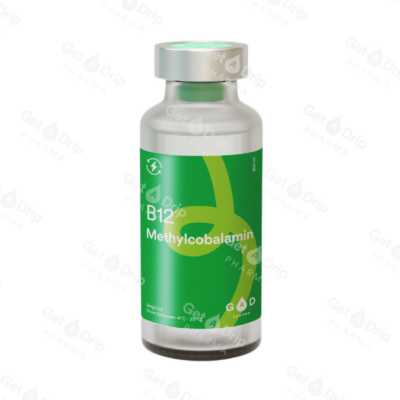Description
This vial of NAD+ SC for subcutaneous injection contains 1g/5ml of Nicotinamide Adenine Dinucleotide.
NAD+ supplementation is popular with those struggling with brain fog, low energy, poor concentration / focus, mood disorders, and more.
Nicotinamide Adenine Dinucleotide (NAD+) is involved in the redox reaction process. This reaction is vital for cellular energy production and metabolism. With cell health forming the basis of our broader health and wellbeing – it’s vital for us to support our bodies in this aspect. This is especially true as we get older, since NAD+ levels decline with age.
NAD+ also serves as an essential electron transporter, coenzyme, and signalling molecule. Alongside its reduced form (NADH) and phosphorylated forms (NADP+ and NADPH), NAD+ is indispensable for various cellular processes, including cellular respiration and anabolic pathways.
Processes such as cholesterol and nucleic acid synthesis, fatty acid elongation, and glutathione regeneration heavily rely on NADP+ and NADPH. Moreover, NAD+-dependent enzymes facilitate post-translational modifications of proteins. Additionally, NAD+ serves as a precursor for cyclic ADP ribose, an important component of calcium signalling.
The body naturally synthesises NAD+ from tryptophan, nicotinic acid, and nicotinamide, commonly known as vitamin B3 or niacin. It can also be produced from intermediates like nicotinamide mononucleotide and nicotinamide riboside. NAD+ undergoes continuous recycling within cells through salvage mechanisms, and studies suggest that our cells may uptake extracellular NAD+ too.
NAD+ levels decline with age, with individuals over 50 years having about half the levels compared to younger individuals. This decline is attributed to various factors including increased activity of CD38, an enzyme that degrades NAD+, and oxidative stress-induced inflammation. This decrease in NAD+ levels has been linked to age-related illnesses and mitochondrial dysfunction.
Recognising the clinical significance of maintaining NAD+ levels led to the establishment of NAD+ therapy in the early 1900s. Low NAD+ levels have been associated with numerous age-related ailments including diabetes, heart disease, Alzheimer’s, and vision loss. The application of NAD+ therapy has showed promise in promoting optimal mitochondrial function, genomic stability, neuroprotection, and longevity.
1g/5ml vial.





Reviews
There are no reviews yet.